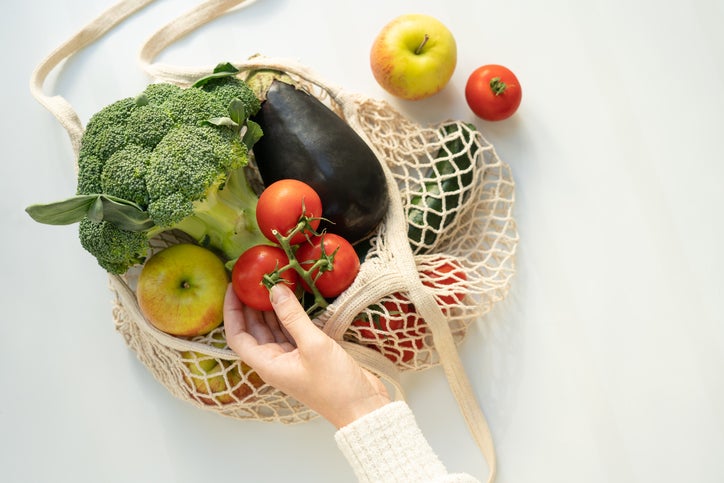September is National Fruits and Veggies Month! A campaign here in the United States to educate on how fruits and veggies are grown, distributed and consumed. Eating fruits and veggies can prevent chronic diseases and is part of a healthy eating pattern. Chronic disease that can be prevented from is type 2 diabetes, stroke, heart disease, cancer and high blood pressure.
So what qualifies as a fruit or a vegetable? Most of us reading this have been to a grocery store and seen the produce, frozen, and canned section with fruits and veggies available. Have you ever stopped to wonder, why are they fruits and vegetables?
Fruits are anything that contains seeds and they develop from flowering plants. The first step in producing a fruit is pollination. These flowering plants need a little help from others to help pollinate. Bees, bats, birds and the wind are good pollinators for these flowers. Once pollinated, fertilization results in the seeds, leaving immature pieces of fruit that then ripen to become something delicious to eat.
Vegetables, on the other hand, are all the other edible parts of the plant such as the roots, bulbs, stems, and leaves of the plant. Veggies such as carrots, potatoes, spinach, corn and broccoli. In addition to sunlight, water, and proper temperature, plants need certain nutrients from the soil to grow.
According to the National Health and Nutrition Examination Survey (NHANES), in 2019, 12.3% of adults met the fruit intake while 10% of adults met the vegetable intake. Looking at those numbers inversely, that means 87.7% of people did not meet daily recommendations for fruit and 90% did not meet the recommendations for vegetables.
Recommendations from, “The Dietary Guidelines for Americans 2020-2025”, say Americans should get 2 servings of fruit and 3 servings of veggies every day. But what counts as a serving for fruit and veggies?
In general a serving of fruit and veggies can be defined as a cup; however, there are certain instances when 1 cup is not the standard.
Let's look at fruit. In general, the following counts as 1 cup/serving for fruit: 1 cup of fresh, frozen, or canned fruit; ½ cup of dried fruit; 1 cup of 100% fruit juice. Eating fruit has many health benefits. Most fruits are low in fat, sodium, calories and abundant in nutrients such as potassium, vitamin C, folate and most importantly fiber.These nutrients can help decrease blood pressure, cholesterol and lower your risk of heart disease. Fruits are oftentimes sweet tasting (not all are sweet) so why not eat fruit?
You may be thinking, fruits are the easy part, but what about the vegetables?
A serving of vegetables includes 1 cup of raw, cooked, frozen, or canned vegetables; 2 cups of raw leafy salad greens; 1 cup of 100% vegetable juice. Just like fruit, most veggies are low in fat and calories. They also provide similar nutrients such as folate, vitamin A, potassium and fiber.
The stigma behind vegetables is that they don’t taste good, but you don’t have to eat veggies plain and raw. You can cook them a variety of different ways such as steamed, baked or roasted. Also, adding seasonings on top such as parsley, thyme, and rosemary. Veggies can also be included in many sauces or blended out. There are plenty of ways to incorporate veggies that fit your healthy eating patterns.
Fruits and veggies are part of a healthy lifestyle. Eat the ones you like, and try the ones you are not sure about. The more exposure you get to a certain food, the easier it gets to eat them. So, remember to get 5 servings of Fruits and veggies this month of September!

